June 27, 2019 feature
Enhancing the vertical mobility of six-legged robot RHex using microspines
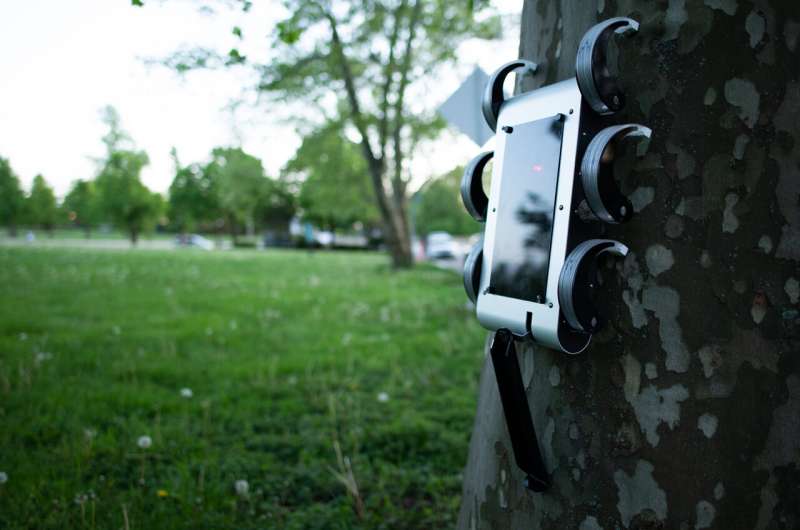
A team of researchers at Carnegie Mellon University has recently proposed a method to improve the vertical mobility of a renowned hexapod robot. Their approach, presented in a paper pre-published on arXiv, entails the addition of microspines to RHex, an existing cockroach-inspired robotic platform designed to navigate unstructured environments at relatively high speed.
While rare, microspines have been previously studied by researchers at other institutions and organizations. In their work, the team at Carnagie Mellon drew inspiration from the work of other teams at Stanford's Biomimetics and Dexterous Manipulation Lab and NASA-JPL's Extreme Environment Robotics group.
"This work started as a semester long project for Professor Aaron Johnson's Robot Design and Experimentation class at CMU," Matt Martone, one of the researchers who carried out the study, told TechXplore. "Many of the team members have worked in the Robomechanics Lab with X-RHex, a simple but rugged robot that can traverse almost any rough terrain. However, X-RHex is stymied by steep slopes and vertical walls, so our team decided to improve it's climbing ability by adding microspine feet and designing a lighter body."
The new version of RHex proposed by Martone and his colleagues, called T-RHex, is augmented with microspine feet that make it ideal for climbing natural surfaces. These microspine feet use dozens of tiny hooks to catch onto millimeter-scale surface irregularities on walls, adhering and allowing the robot to climb a variety of surfaces. These microspines work really well on rough rocky surfaces, concrete and brick surfaces, as well as softer surfaces, such as wood, as all of these have plenty of 'catch-points' typically referred to as asperities.
"Other climbing approaches such as gecko adhesive and suction cups are better for glass or polished metal, but would fail on natural surfaces, which are more realistic for the use case of our robot," Martone explained. "By adding microspines to the back of the robot's feet, we leave its forward walking motion on the ground unaffected, using a specially-designed backward motion to climb."
The researchers evaluated their upgraded RHex platform in a series of experiments on three surface types: cork, brick and plywood. They found that T-RHex was able to statically hang on slopes up to 135° from horizontal (45° overhang) and ascend slopes up to 55° without any loss in its ground mobility.
"Our team was really excited by the ability to cling onto overhangs of up to 45°, but practically the most important result is the steep slope ascent," Martone said. "Our work in designing these feet and the climbing footfall pattern is directly applicable to other RHex-type robots, which will expand the types of terrain they would be able to conquer."
-
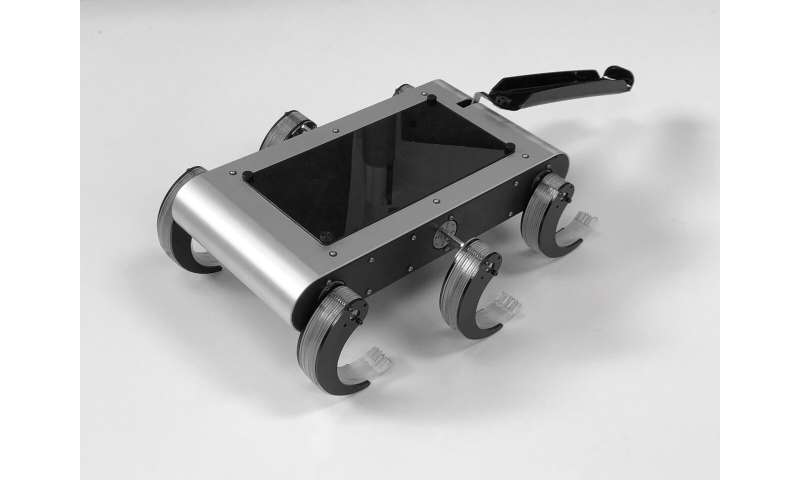
T-RHex. Credit: Adam Zeloof. -
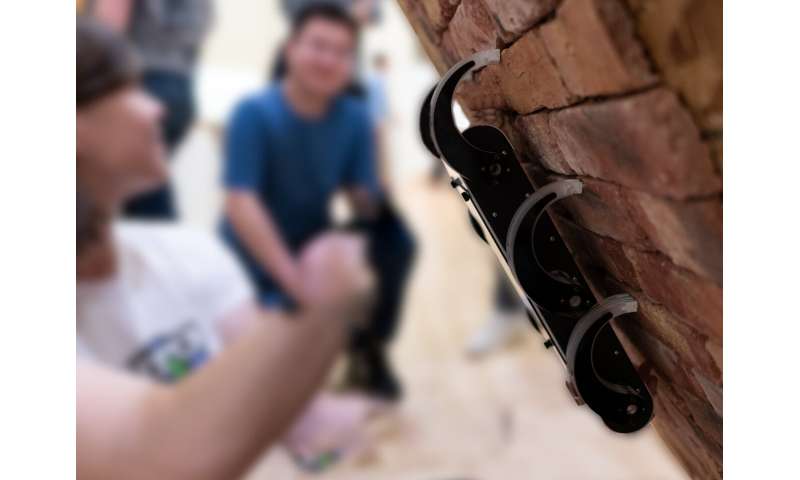
Credit: Adam Zeloof. -
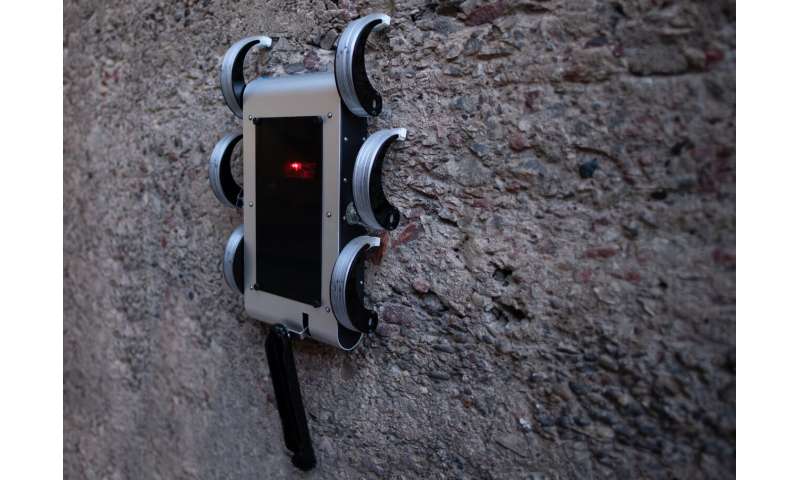
Credit: Adam Zeloof. -
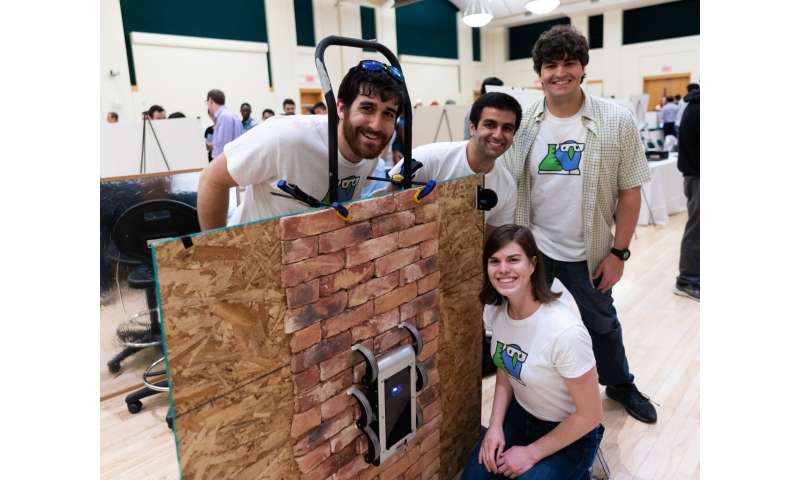
Credit: Adam Zeloof. -
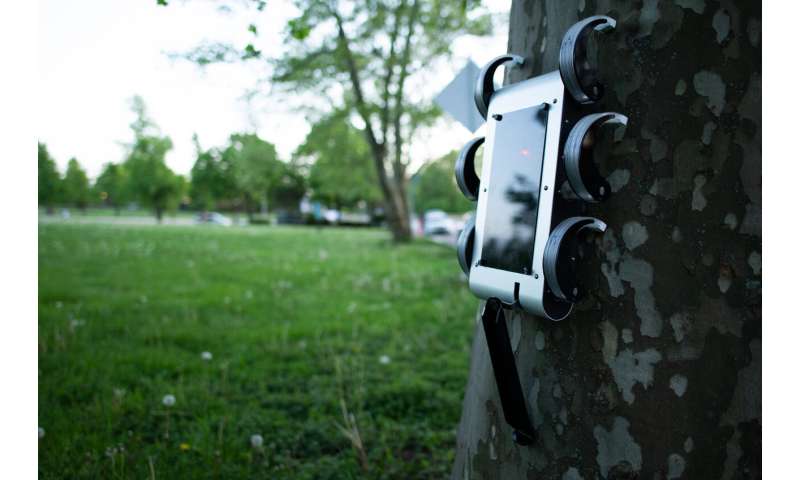
T-RHex hanging from a tree. Credit: Adam Zeloof.
Over the past two decades, studies carried out at different universities worldwide have significantly enhanced the RHex platform, enabling capabilities such as running, jumping, and stair climbing. In their recent study, Martone and his colleagues added to this pool of research by enhancing the robot's vertical mobility and thus its climbing capabilities. According to the researchers, RHex might soon overcome even greater obstacles and this could allow its deployment as a reconnaissance robot, payload delivery system, or even a wildlife observer.
"We are now focusing on improving the motion T-RHex uses to climb to finally achieve a fully vertical ascent," Martone said. "We also want to iterate further on the leg design to be more flexible and durable to enable ground sprinting."
More information: Matt Martone, et al. Enhancing the vertical mobility of a robot hexapod using microspines. arXiv:1906.04811 [cs.RO]. arxiv.org/abs/1906.04811
© 2019 Science X Network



















